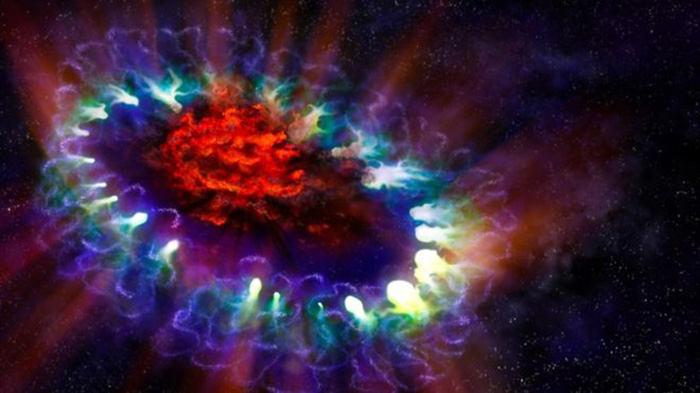Supernova `stream` in neutrino lab`s sights

Such events occur about every 30 years, but the neutrino streams they produce have not been studied in detail.
Dune (Deep Underground Neutrino Experiment) will be hosted at Fermilab in Batavia, Illinois.
It will involve the development of the world`s most high-intensity beam of neutrinos, which will travel 1,300km (800mi) underground from Fermilab towards a massive detector instrument based at the Sanford Underground Research Facility in South Dakota.
The venture is the product of a merger between European and US projects with similar aims. The international collaboration held its inaugural meeting at Fermilab in April.
"There has been a process since last summer to prepare the ground for this collaboration, based on bringing together the US and European projects. There are now 700 people signed up," said Prof Stefan Söldner-Rembold, from the University of Manchester.
"The step forward is a new collaboration with a new name that has commitments from the US, Europe, India and other regions to go forward."
Neutrinos are one of some 17 elementary cosmic building blocks that make up the Universe. But they are also a source of intrigue for particle physicists.
They are extremely light particles, with no electric charge and pass harmlessly through other matter. This property makes them very difficult to observe and is responsible for them being nicknamed "ghost particles". Neutrinos may also play a role in the mystery of why the Universe came to consist mostly of matter rather than antimatter.
They are found in three different states, or flavours, and the particles can flip from one flavour to another. Dune aims to carry out a detailed investigation of this three-flavour model of neutrino physics.
The project will make use of an existing particle accelerator at Fermilab as a proton source, and then smash the beam into a so-called "target" made of a material that will engender the production of short-lived particles. These will travel about 200m through a decay pipe, and as they do, a large proportion will transform into neutrinos.
Another potential scientific pay-off of the collaboration might be the opportunity to observe an exploding star in closer detail than ever before. But the team will need luck on their side, as it is dependent on a suitable event taking place during the lifetime of the project. It`s a game of chance, but scientists are hopeful the detector will catch one.
"If a supernova happens in our galaxy, which should happen once every 30 years or so, this experiment should - within seconds - see thousands of neutrino interactions," said Prof Söldner-Rembold.
"There was a supernova in 1987 and there were some neutrino detectors online - they saw something, which spurred a lot of interest at the time. But a supernova with a detector like this, it is something that has never been observed.
The "spillover" from a supernova would depend on how far away it was from Earth. But such an energetic event, close enough to Earth, could potentially send huge numbers of neutrinos streaming our way - to be picked up by detectors. This could potentially shed light on the mechanics of stellar explosions, and how these events evolve over time.
Dune will also look for a hypothetical phenomenon known as proton decay. Protons are very stable sub-atomic particles; they have never been seen to transform into lighter cosmic building blocks.
However, in some theories of particle physics, such as the still-unconfirmed framework known as supersymmetry, this should happen.
"It`s the ultimate rare decay. It`s another way of looking for `new physics`, separate from the LHC, where you don`t need to go to high energies," said Prof Söldner-Rembold.
Cern, the organisation that operates the Large Hadron Collider, is one of those that is now involved with Dune. The cost of the entire project is on the order of $1bn, but some international partners pay through in-kind contributions.
The detectors will be filled with liquid argon, with the first of the four 10-kilotonne modules due to be installed in the 2020s. Neutrino collisions create electrons and flashes of light in the liquid argon, which leave observable traces of the neutrinos. The project is set to run for three decades.















































